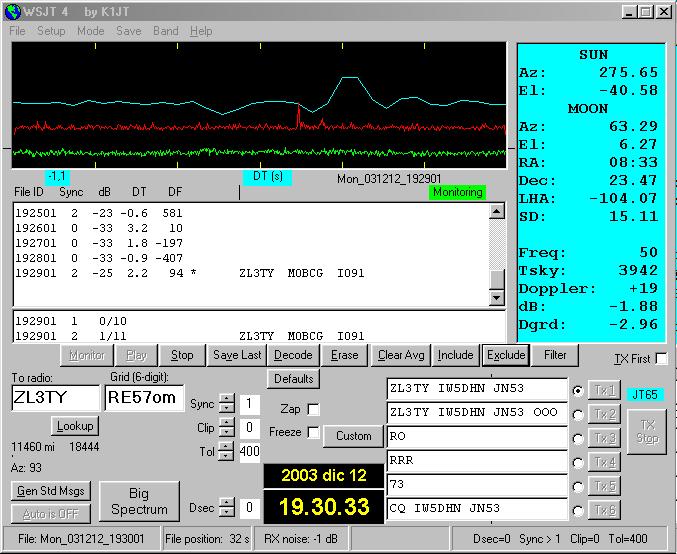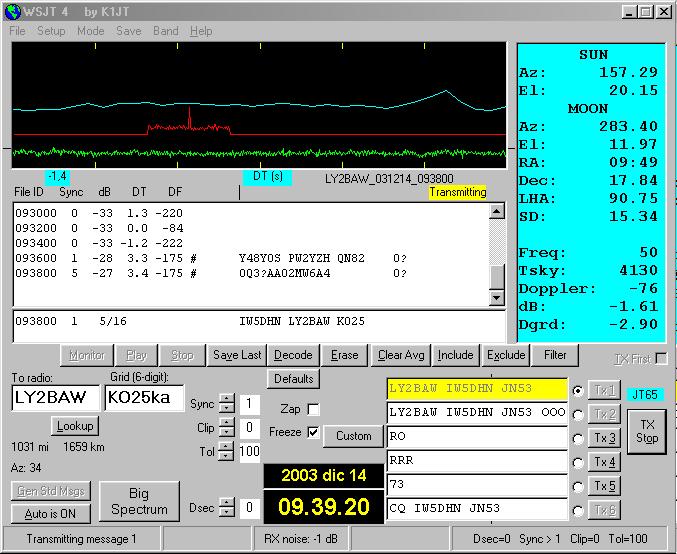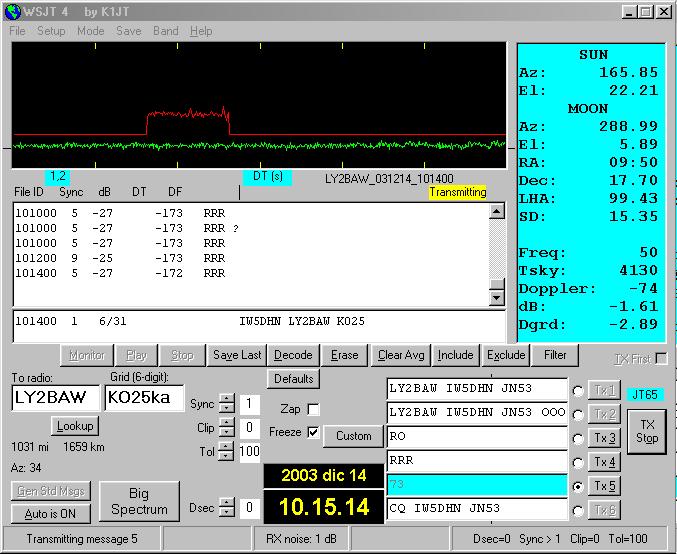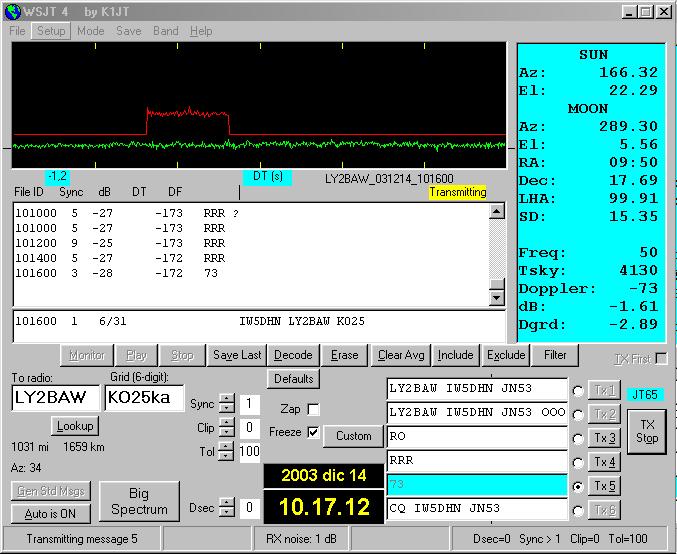JT65
improves on JT44 performance to about 3db
The new digital mode JT65, released by Joe K1JT the 2th of December 2003, is a tremendous improvement on old JT44 transmission mode.
According to the author, the new mode permits, on single transmissions, 100% copy at the following approximate levels:
1. Call1 + Call2 + Grid -22 dB
2. OOO added to above -28 db
3. Plain text -20 db
4. Shorthand messages -28 db
In contrast, JT44 requires approximately -19 dB to give 100% copy in a single transmission.
This means that now, with array like mine, it will be possible to complete easily EME QSO with stations running single antenna and less than 500 watts!
Another great advantage of JT65 is his relatively narrow bandwidth: here you can clearly note the difference between JT65(A) and JT44 mode. JT65(A) uses about 200 hz while JT44 needs about 500 hz bandwidth. That permits to reduce the passband filter on your rig at about 1000/800 hz without introducing degradation on decoding performance.
This is a picture of a screenshot taken during a sked between Ian M0BCG and Bob ZL3TY as seen at my side

Just after a single transmission at -25db I got both calls at 100%. Ian was using 2x6 elements antennas.
MY FIRST EME QSO USING JT65
At the second attempt, the 14th of December 2003, I completed with Tadas LY2BAW, first of ever EME QSO between Italy and Lithuania on 50 Mhz. Tadas was running a single 11 elements long yagi 6M2.5WLC at 22m tower.

As you can notice by the # sign after the DF line, Tadas was sending OOO string but the program only got the second sync pattern, not the whole OOO text. I was pretty sure Tadas was sending OOO because I had already received several strings all containing the # caracter.
As soon as Tadas started to send RRR I immediatly got it on my screen.

Even if the signals were really weak and fading, as you can notice looking at the following picture taken by Spectran, the JT65 software always got good sync and solid decoding.

But even more weak
the signals were when Tadas started to send 73 because the low Moon on the
horizon at his side:

The software handled a perfect sync 3 with signal at -28db and a perfect "73" string decoded! The signals were so weak that were almost invisible at Specran analisys (the Tadas signal is hardly detectable as two vertical lines in the center of the following picture, between 1000 and 1500 marks)

So, the theoretic studies of Joe K1JT about the improvement of JT65 mode on JT44 are confirmed by the QSO I made with LY2BAW, certainly impossible to be completed using JT44 mode with signals at that weak levels.